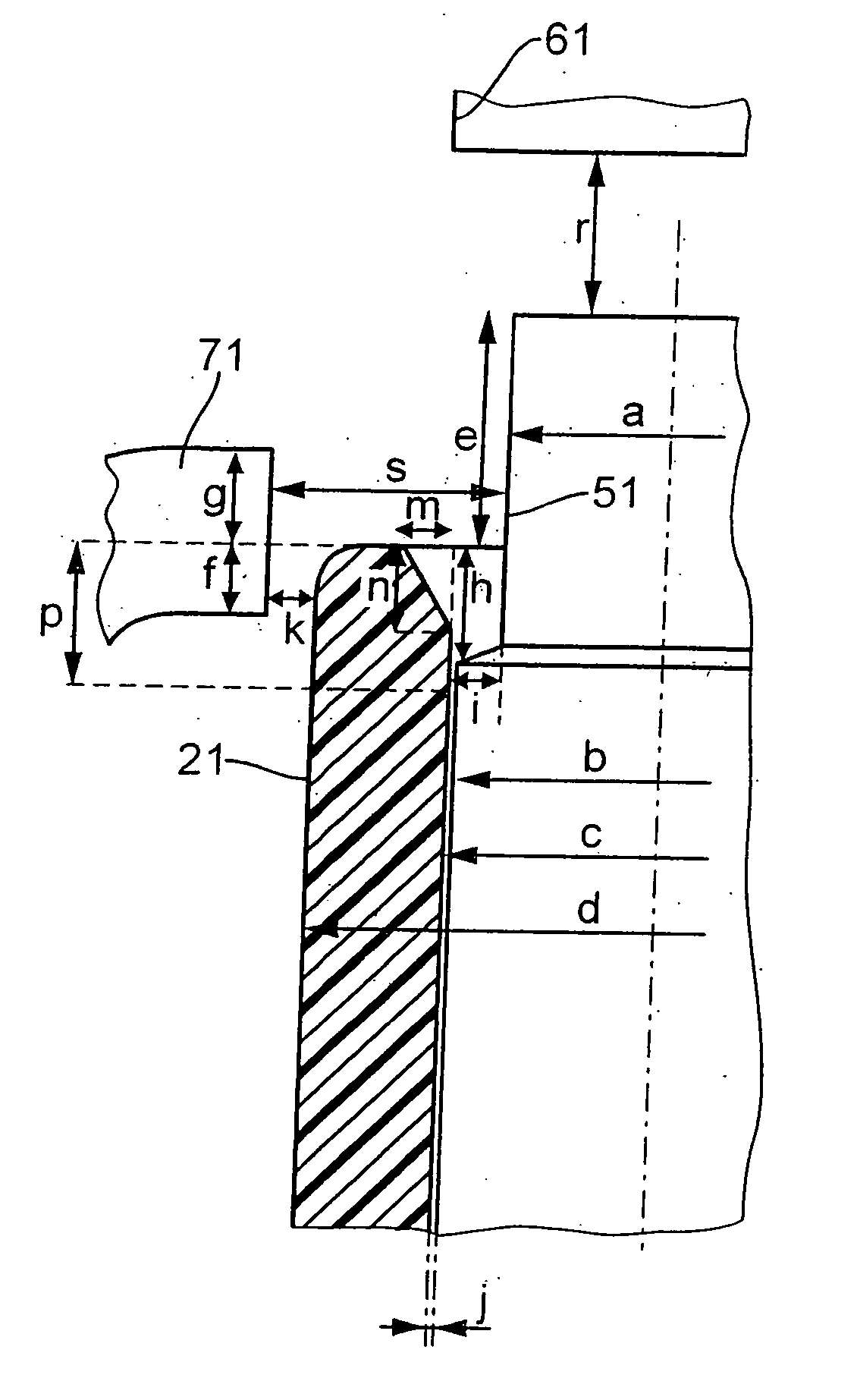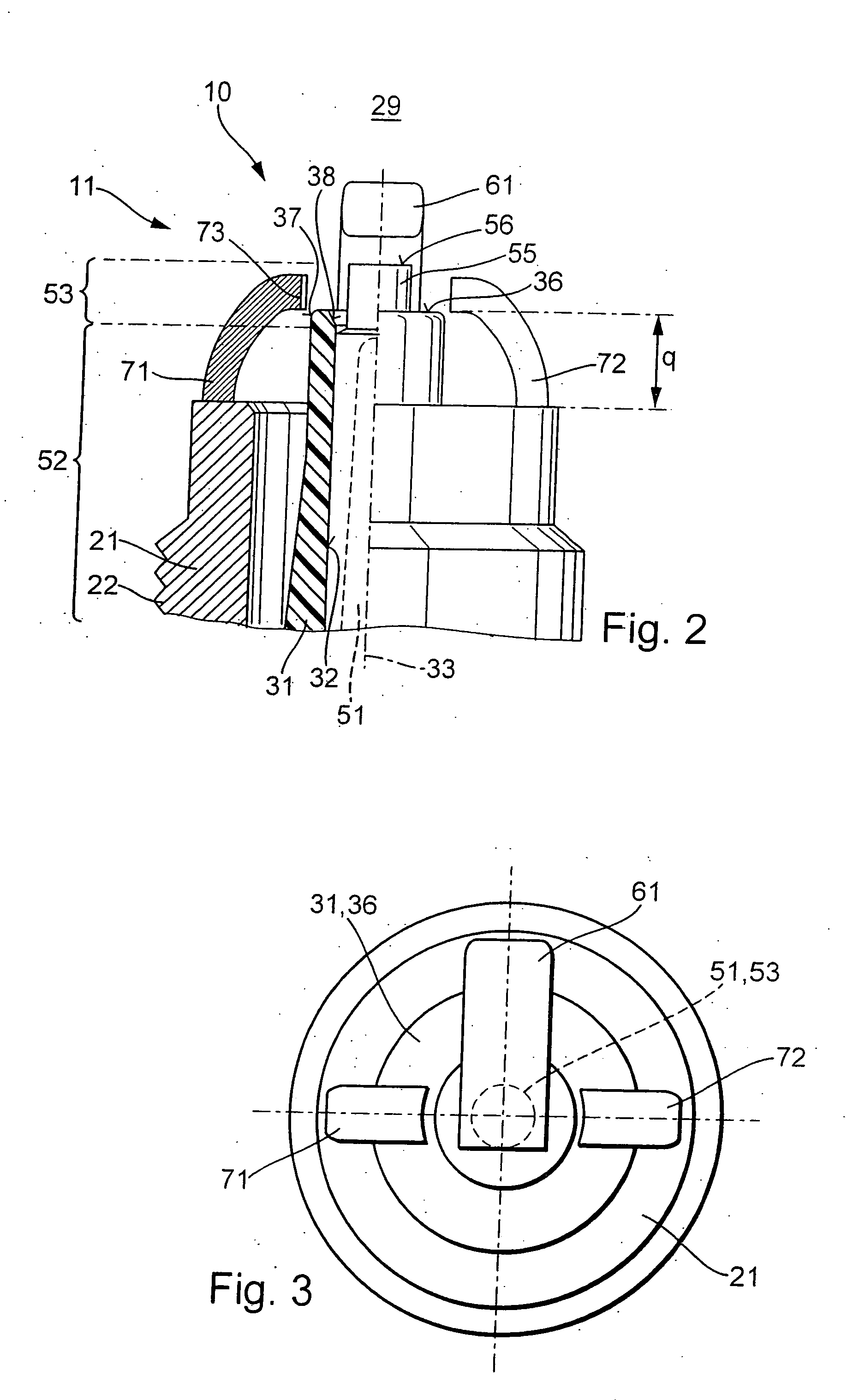[0005] An example spark plug according to the present invention may have the
advantage that the insulator is quickly heated up during a starting phase, so that
soot deposits in the starting phase are greatly reduced.
[0010] In order to avoid the soot deposits during a
cold start, furthermore, advantageously a geometry of the front section of the insulator is provided in which the quotient of volume V and outer surface A of the front section is less than 0.33 mm, particularly within the range of 0.20 mm to 0.32 mm. The heating of the front section of the insulator during cold starts takes place the quicker, the smaller is the volume V to be heated, and the greater the heat-absorbing outer surface A. A particularly good heating behavior, at simultaneously low wear on the end face of the ceramics by sparks digging in, was achieved by a spark plug having a ratio V / A in the range of 0.23 mm to 0.28 mm, particularly at 0.25 mm.
[0013] Generally, such spark plugs are designed so that the majority of the discharges take place to the top electrode, and that the spark air gap between the top electrode and the center electrode leads to the optimal ignition of the air / fuel mixture, since the
flame development (
flame core) takes place at a specified location, whereby a uniform burn-through of the air / fuel mixture is ensured. This is especially important in stratified-charge engines. The
voltage required for generating an optimum spark air gap is, however, relatively high, so that even laterally, at the outer surface of the insulator,
high field strengths are present, by which free charge carriers are generated on a contaminated (e.g., carbon-fouled) surface of the insulator. The field configuration is changed by a gap provided between the second section of the center electrode and the insulator in such a way that the
electrical field strength on the outside of the insulator is reduced. Thereby the number of movable charge carriers is reduced, and with that also the probability of a sliding
discharge along the insulator to the housing. Therefore, advantageously the center electrode has a first and a second section, the first section having a radial distance from the longitudinal bore of the insulator of less than 0.15 mm, and the second section having a radial distance from the longitudinal bore of at least 0.15 mm. Because of the gap between the second section of the center electrode and the insulator, the
field strength is reduced in the area of the surface of the insulator, and with that, the tendency to sliding discharges.
[0016] In spark plugs whose center electrodes have a gap in the second section from the insulator, the length p of the front region of the insulator is advantageously given by the axial extension h of the region of the second section of the center electrode that is situated within the insulator, i.e., the insulator has, at least in that region, the advantageous geometry with respect to heating up that was described above, in which the center electrode has a comparatively
large distance of its second section from the insulator. For, on account of the gap between the insulator and the second section of the center electrode, the heating up of the insulator is additionally promoted, since the hot gas is better able to reach the inner surface area of the insulator, so that a good
heat transfer also takes place in the region of the inner surface area.
[0021] It is of
advantage if the edge of the end section of the second ground electrode, that faces away from the
combustion chamber, is positioned flush with the end face of the insulator. By such an arrangement, in which the end section of the second ground electrode is not situated directly opposite the outer lateral surface of the insulator, the formation of soot bridges between ground electrode and insulator is effectively prevented. In a particularly advantageous manner, the outer edge of the insulator's end face is rounded off at a
radius of about 0.3 mm, since because of this
radius, the distance between the edge at the connecting end of the end section of the second ground electrode from the insulator is increased, and since at this geometry, the tendency towards sliding
spark discharge is not reduced, or at least not substantially reduced by the application of the
rounding off of the outer edge of the insulator.
 Login to View More
Login to View More  Login to View More
Login to View More 


